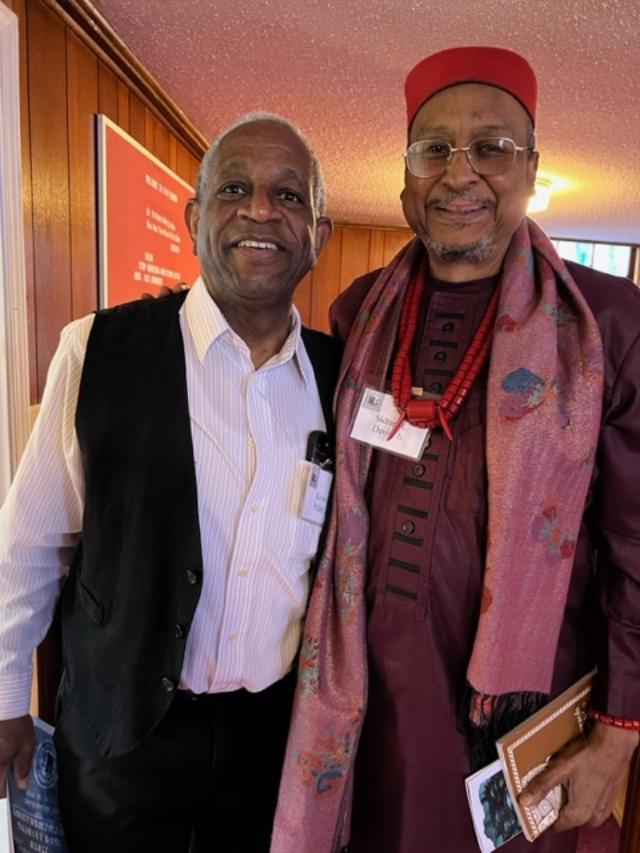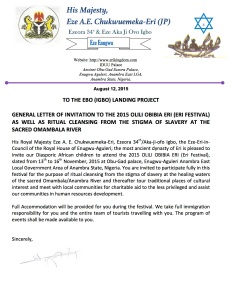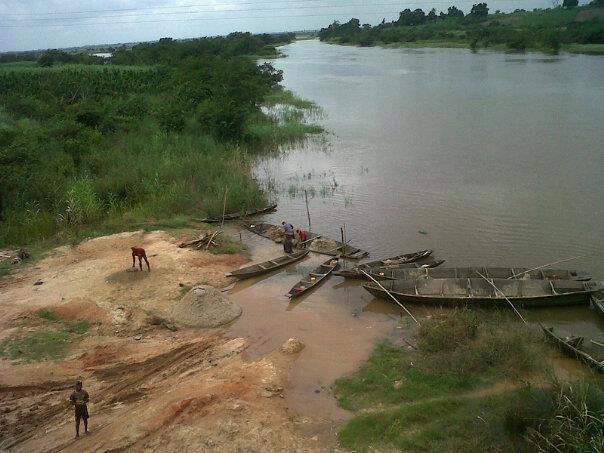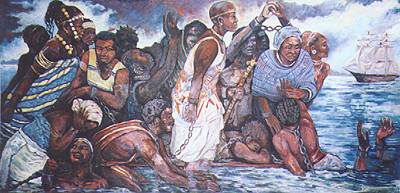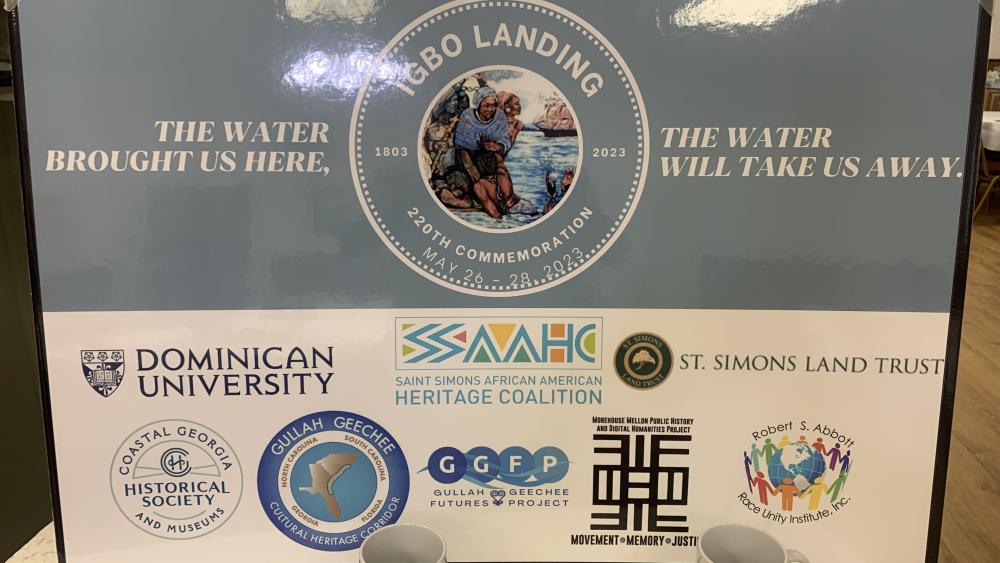
Dominican University’s Center for Igbo Studies helped organize a recent three-day event commemorating the anniversary of a historic slave revolt.
The 220th Igbo Landing Commemoration, held May 26-28 on St. Simons Island, Georgia, recognized the group of Igbo people who, after arriving in America following their capture in West Africa in 1803, took control of their slave ship and committed mass suicide by drowning to avoid a life of enslavement.
The area where the May 1803 revolt occurred, at St. Simons Island, became known as Igbo Landing. Last month’s gathering was the very first public gathering to commemorate the revolt held there, said Dr. Nzuki Nnam, director of the Center for Igbo Studies and a professor of philosophy at Dominican who was involved in the planning the commemoration.
“We cannot lose the message of all this — that a group of Africans were brought here and they would rather die than be enslaved,” Nnam said. “That is the message those enslaved Africans wanted to convey: The concept of resistance and freedom for our people. This was one of the first slave revolts in America.”
The commemoration included guided tours of Igbo Landing, a series of lectures on Igbo culture and the significance of the 1803 resistance, traditional Igbo and Gullah Geechee dance performances, and a gathering and public blessing at a local church.
The event was held in collaboration between Dominican’s Center for Igbo Studies and St. Simons African American Heritage Coalition, St. Simons Land Trust, Morehouse Mellon Public History and Digital Humanities Project, the Robert S. Abbott Race Unity Institute, the Gullah Geechee Cultural Heritage Corridor, and the Coastal Georgia Historical Society.
About 200 people participated, including Dr. Myiti Sengstacke-Rice, president and CEO of Chicago Defender Charities and keynote speaker for Dominican’s 2023 Black Achievements Ceremony.
Nnam and the Center for Igbo Studies would like to see Igbo Landing designated as a national historic memorial site and for the anniversary of the slave revolt to be acknowledged annually.
“I want people to know what those innocent people did, that their lives did not end for nothing,” Nnam said. “They really sacrificed their lives for our freedom. To memorialize their plight is the one thing we can do for them.”
The Center for Igbo Studies at Dominican University was established in 2019 at the request of the Igbo Studies Association, a global organization dedicated to promoting and encouraging the study of Igbo history, culture, language, literature, social movements, science and technology.
The Igbo are an ethnic group originating from Nigeria, with a sizable population in the United States and the Chicago metro area.
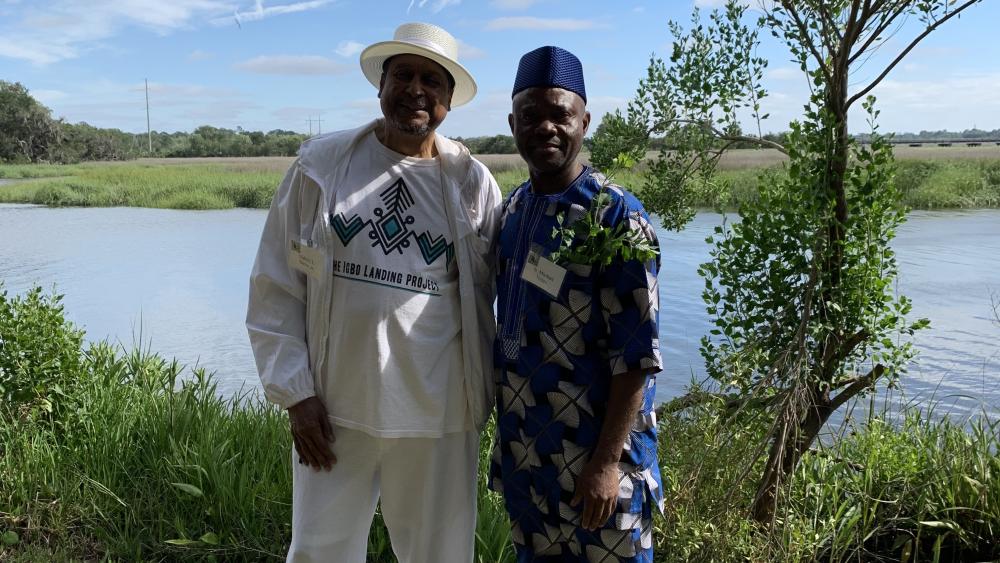
Dr. Nkuzi Nnam, right, with Sidney Davis, Jr., of the Igbo Landing Project, stand at Igbo Landing at St. Simons Island, Georgia.


